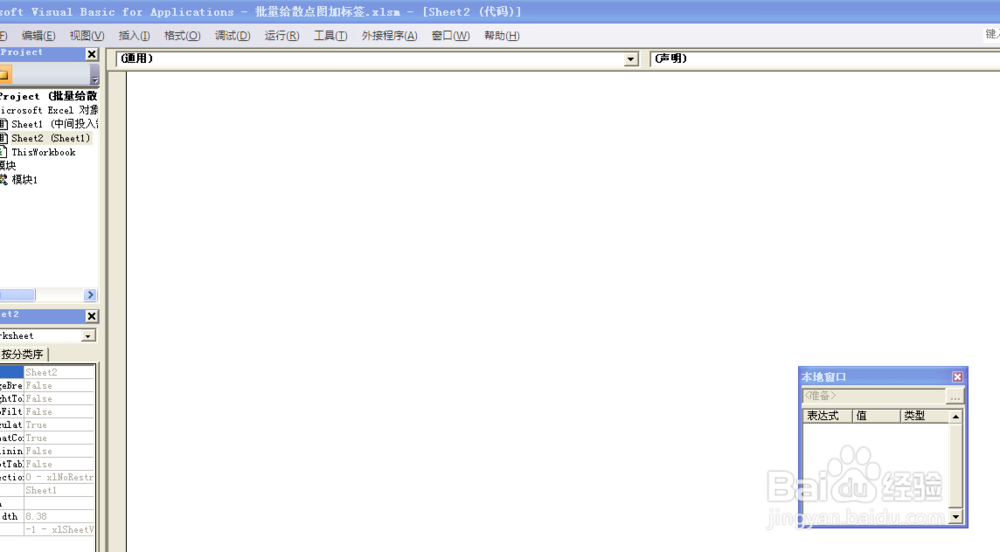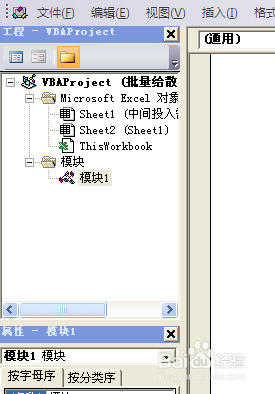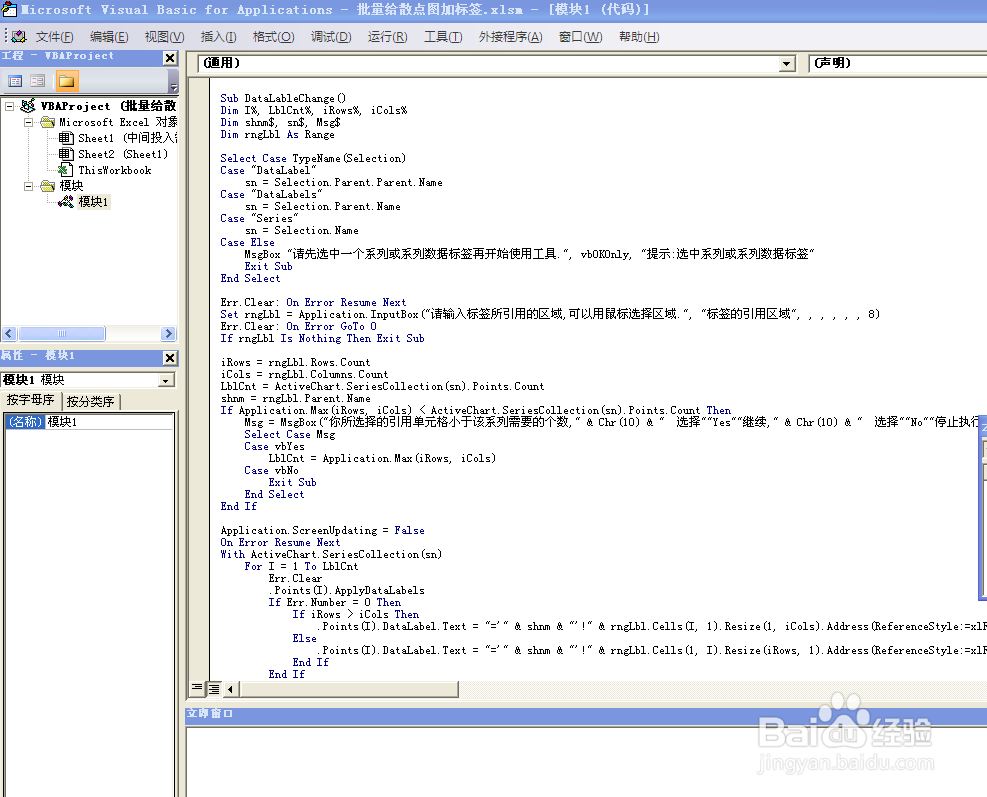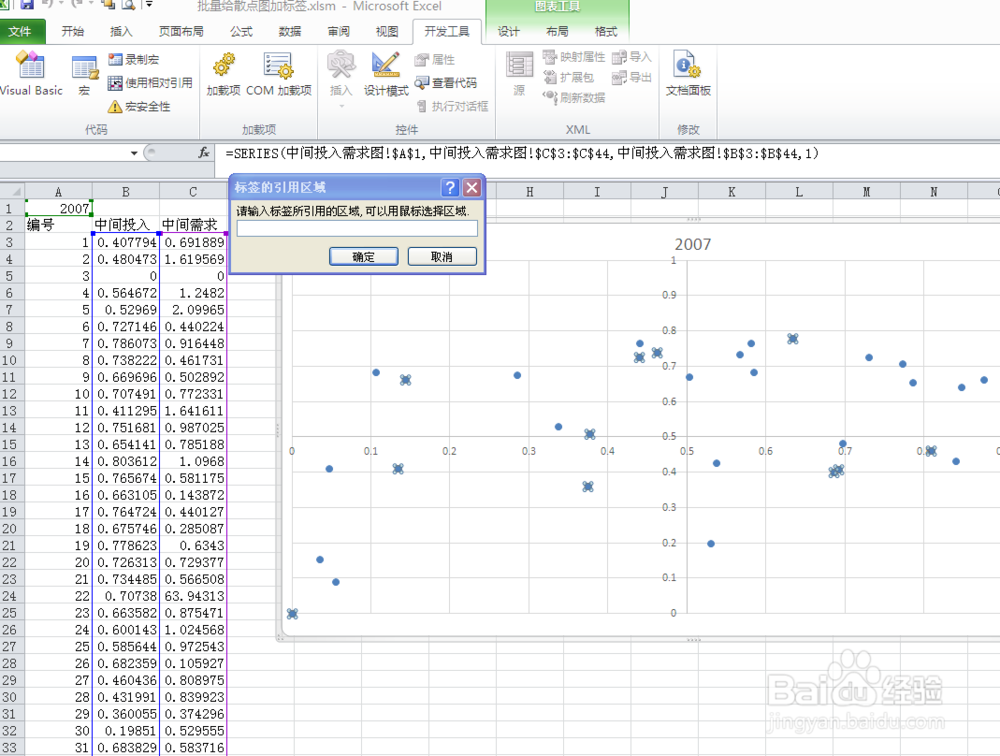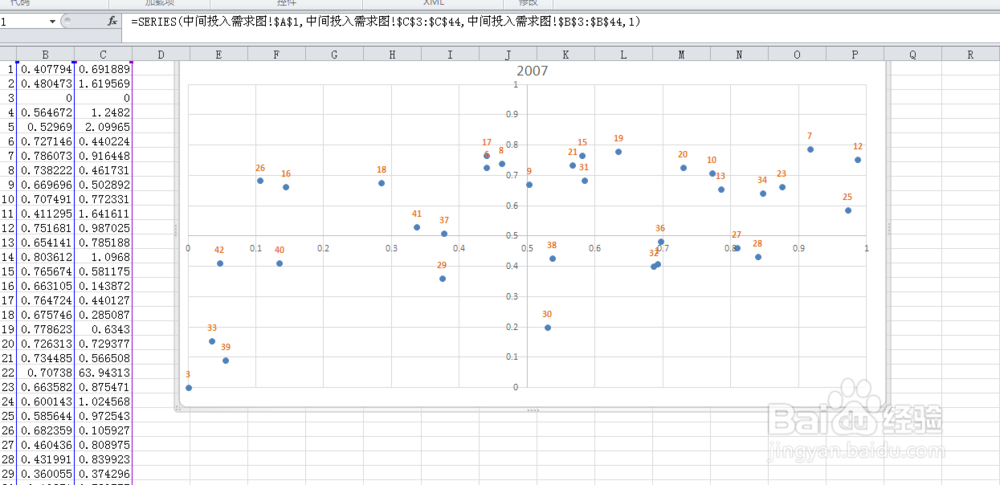1、打开一个excel文件
2、按alt+F11后会打开一个VBE窗口
3、在VBE的左侧的VBA对象中选择VBAProject(PERSONAL.XLSB)后右键,插入-模块
4、把上述代买复制到右侧空白区域,然后保存并关闭VBE窗口Sub DataLableChange()Dim I%, LblCnt%, iRows%, iCols%Dim s茑霁酌绡hnm$, sn$, Msg$Dim rngLbl As RangeSelect Case TypeName(Selection)Case "DataLabel" sn = Selection.Parent.Parent.NameCase "DataLabels" sn = Selection.Parent.NameCase "Series" sn = Selection.NameCase Else MsgBox "请先选中一个系列或系列数据标签再开始使用工具.", vbOKOnly, "提示:选中系列或系列数据标签" Exit SubEnd SelectErr.Clear: On Error Resume NextSet rngLbl = Application.InputBox("请输入标签所引用的区域,可以用鼠标选择区域.", "标签的引用区域", , , , , , 8)Err.Clear: On Error GoTo 0If rngLbl Is Nothing Then Exit SubiRows = rngLbl.Rows.CountiCols = rngLbl.Columns.CountLblCnt = ActiveChart.SeriesCollection(sn).Points.Countshnm = rngLbl.Parent.NameIf Application.Max(iRows, iCols) < ActiveChart.SeriesCollection(sn).Points.Count Then Msg = MsgBox("你所选择的引用单元格小于该系列需要的个数," & Chr(10) & " 选择""Yes""继续," & Chr(10) & " 选择""No""停止执行.", vbYesNo, "引用单元格数量不够") Select Case Msg Case vbYes LblCnt = Application.Max(iRows, iCols) Case vbNo Exit Sub End SelectEnd IfApplication.ScreenUpdating = FalseOn Error Resume NextWith ActiveChart.SeriesCollection(sn) For I = 1 To LblCnt Err.Clear .Points(I).ApplyDataLabels If Err.Number = 0 Then If iRows > iCols Then .Points(I).DataLabel.Text = "='" & shnm & "'!" & rngLbl.Cells(I, 1).Resize(1, iCols).Address(ReferenceStyle:=xlR1C1) Else .Points(I).DataLabel.Text = "='" & shnm & "'!" & rngLbl.Cells(1, I).Resize(iRows, 1).Address(ReferenceStyle:=xlR1C1) End If End If NextEnd WithErr.Clear: On Error GoTo 0Application.ScreenUpdating = TrueEnd Sub
5、.在Excel的开发选项标签中点击“宏”,选择PERSONAL.XLSB!DataLableChange就可以执行了
6、当然,执行前得先选中需要被替换的标签,然后执行上面的4,然后选择替换用的标签,确定就可以了

